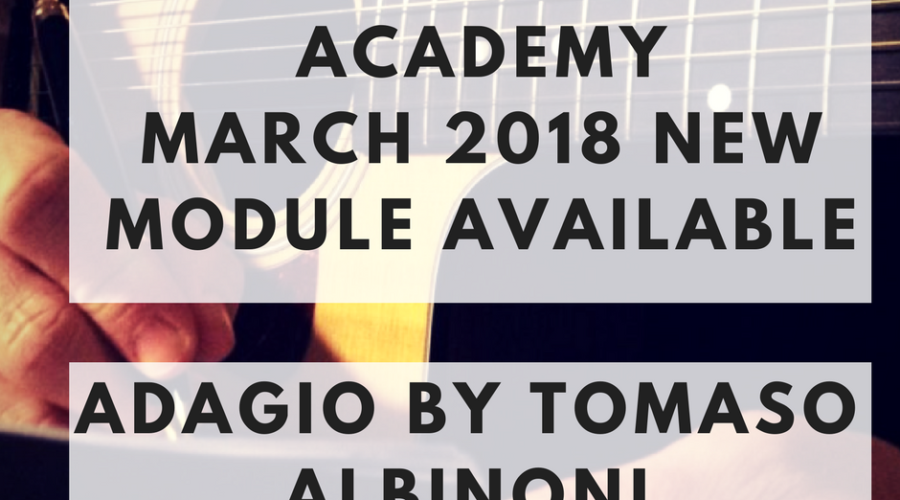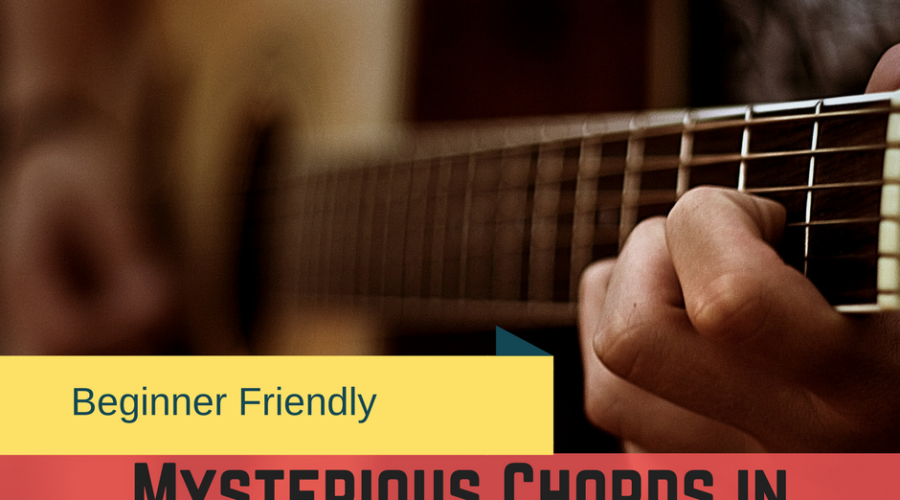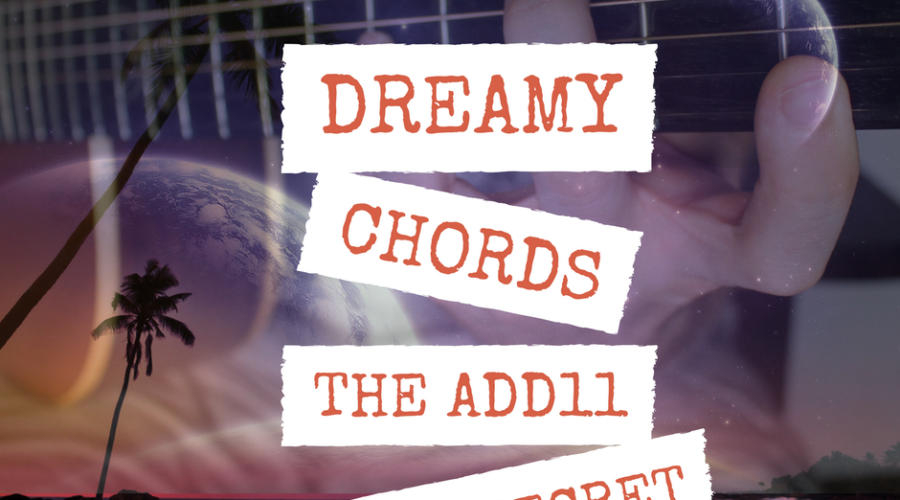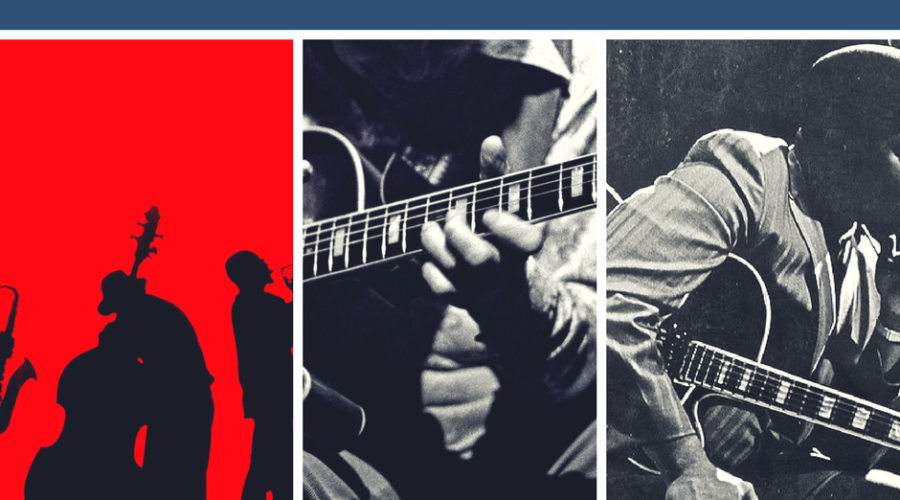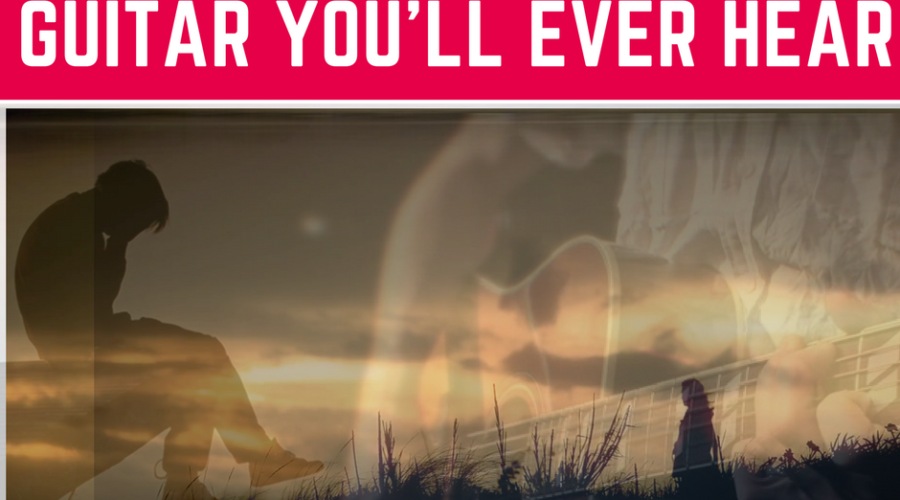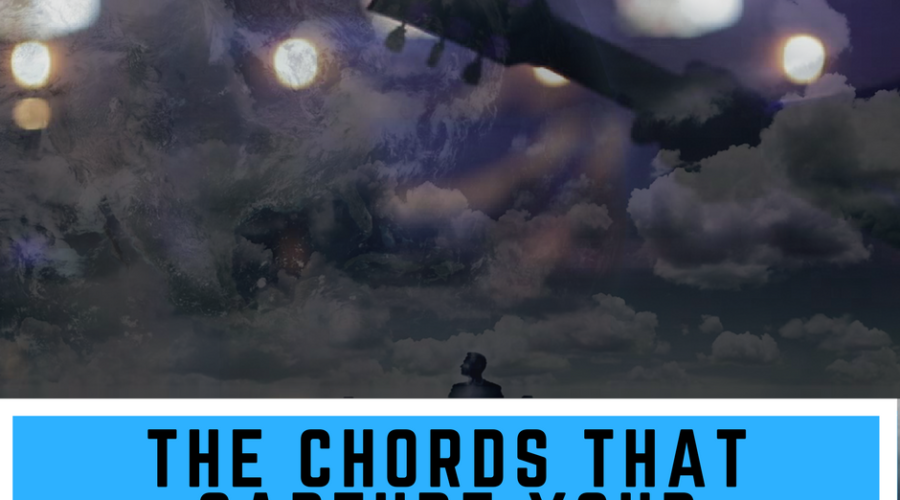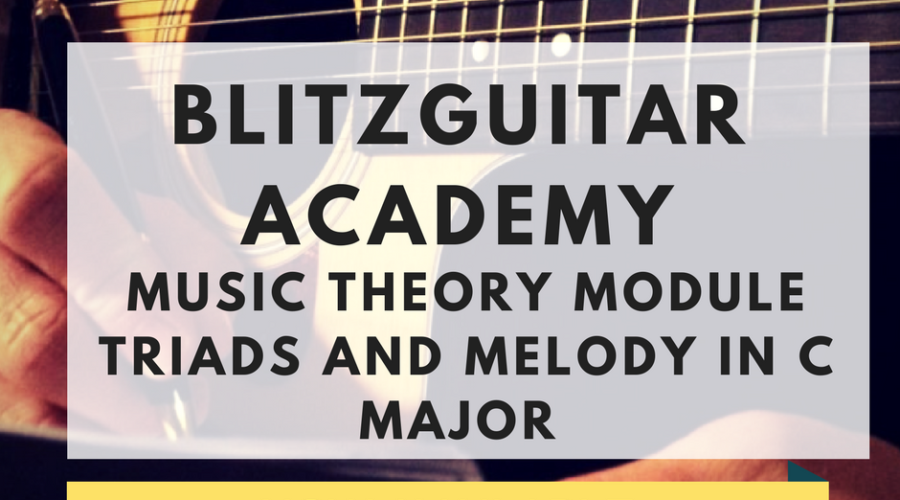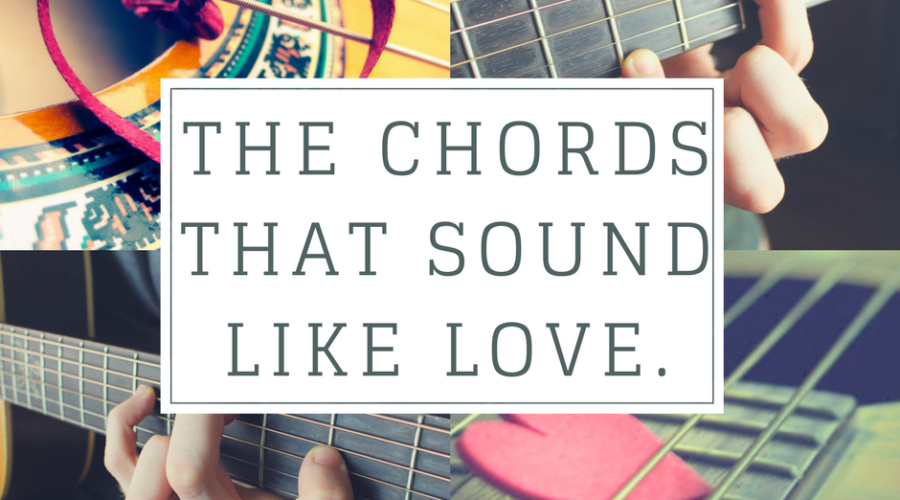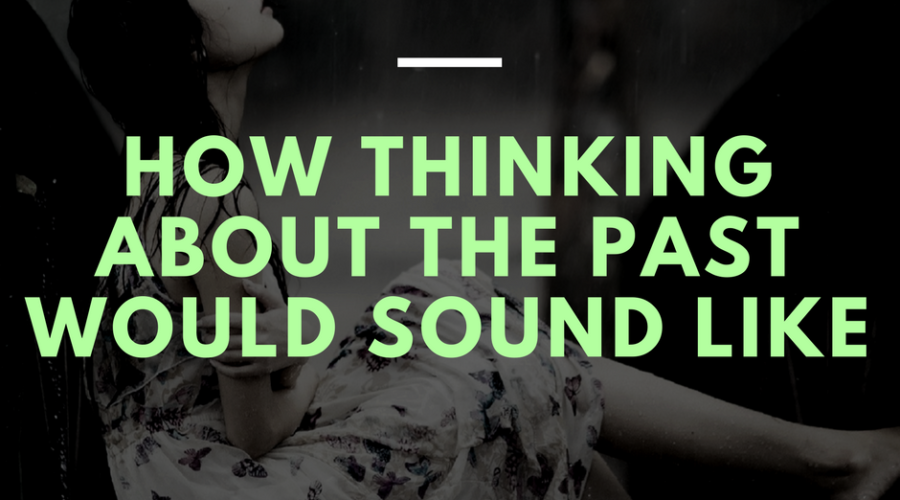Mysterious Chords in D minor | Easy Trick to Spice up Chords in D minor Key
Mysterious Chords in D minor
Easy Trick to Spice up Chords in D minor Key
Happy Easter, guys! I hope you are having a fantastic day.
Today I want to talk to you about the D minor key and how you can spice up chords by using a straightforward guitar trick.
I call these types of chords “Mysterious chords” because they have this obscure, mystical sound that is really characteristic of this key.
Chords in D minor key love the note “E,” and the awesome thing about the guitar is the fact that the first open string happens to be E. All we got to do is to play the chords so that the open strings are always open and never fretted.
Using this simple trick, you will be able to create beautiful, mysterious chords without changing the basic chord or having to learn more difficult shapes.
As always we will keep the exercises very practical and musical, so you feel playing some music.
Once you are done with the exercise, don’t forget to experiment with the chords and apply them to songs you already play (as long as they are in a key of Dmin).
For now, grab your guitar and play along.
Let’s get started.
The Video
The Chord Progression
Mysterious Chords in D minor
Let’s take it to step by step and learn the chords we will be working on today.
You will be surprised to see how each chord will change once the first open string is added to it.
Let me analyze every chord, and let me show you the difference between the basic and mysterious chords.
D mind add 9
The D minor chord we will be playing for this exercise sounds pretty basic.
The chord on the left is a simple D minor chord with Root, root, and minor 3rd. Once we add the E open string, the chords become Dmin(add9)

Bbmaj(#11)
This chord sounds very mysterious and beautiful to arpeggiate.
Notice that the only difference between the D minor chord and the B flat is the bass note.
The simple Bb major chord has the Root, major 3rd, and perfect 5th, but when we add the E open string, it will be a Bb(#11) chord.
The Gmin7(6)
Another interesting sounding chord. The Gmin7(6) is a basic G minor 7 chord with the major 6th. This chord reminds me of the Dorian more (because of the major 6 over a minor chord).

Cmaj (add9/11)
This chord can have two different names. Dmin/C and Cmaj (add9/11). The E open string is definitely closer to a C major chord with the 9th and 11th.

Don’t forget to Experiment.
Guys, once you are done with the exercise, you should always implement these chords in your playing.
The ultimate goal is to copy and learn, then experiment and implement.
Good luck with your journey.
Romantic/Sentimental Italian Music
How being “Italian” Sounds like.
I was extremely lucky to born in Italy. Precisely I am from Naples, the city where Pizza was born.
You can describe it in three words: Sun, Sea, and Mediterranean food.
Music is one of the most important aspects of our culture, and the Neapolitan music (canzone Napoletana) is one of the most famous music in the world, a combination of folk, popular and theatrical styles.
Today I want to show you how being an Italian sound like with this sentimental Italian music arrangement on fingerstyle guitar.
Each Italian region has different traditions and music styles, so I am mainly referring to “Southern” Italian music.
In this arrangement, I combined different techniques, such as classical arpeggios, tremolo, and minor melodies.
The classical arpeggios are typical of classical Italian composers/guitarists such as Mauro Giuliani and Ferdinando Carulli, while the tremolo should emulate the sound of a typical Neapolitan instrument called “Mandolino.”
I hope you enjoy this romantic/sentimental Italian music, guys.
Have a super day!
The Video
Dreamy Chords in B Major
Why don’t Guitar Players Play much in B major?
Today I want to talk to you about the B major key and why guitar players don’t usually play in that key.
I find B major to be an exciting key with dreamy chords and beautiful chord-melody voicing, yet I don’t see many guitar players playing around with it.
It is true, though, that a key like E minor or D major offers easier possibilities and more “friendly” chords, but we should always push ourselves out of the comfort zone and try new challenging things.
In this guitar lesson, I am going to show you a chord progression in B major that sounds dreamy.
Dreamy chords usually have add9, add11, and #11 extensions so that we will base the chord progression around those extensions.
As always, make sure you take things step by step and learn one chord at a time.
I wouldn’t really consider this lesson beginner-friendly, but I highly recommend anyone to give it a try.
Fingerstyle makes it possible!
Be inspired.
Let’s get started.
The Video
The Dreamy Chords
How they are done
One of the main characteristics of the B major key is the fact that we can use the top two open strings (E and B) as extensions. These two strings will relate differently to each chord, so this trick doesn’t work all the time.
The trick with add11 chords are the fact that you want to play the major 3rd and 11 together. I will explain that better later when we analyze the chords.
The chord progression we are working on today goes as follows: Bmaj(add11), F#maj(Add11/9), Emaj(add9/#11), Gm, F#maj(Add11).
As you can see, a ton of add11 chords.
Let get into details.
Bmaj(add11)
Starting from the bass note, you will play the Root (6th string), root (4th string), major 3rd (3rd string), root (second string), and add11 (first string)
F#maj(Add11/9)
This chord will have Root (6th string), root(4th string), major 3rd (3rd string), add11(2nd string), and maj9 (1st string)
Emaj(add9/#11)
This chord sounds a little bit different than previews two chords. We will have Root (6th string), #11 (3rd string), perfect 5th (2nd string), and add9 (1st string).
Other Chords
There are also other chords such as G minor and a different F#maj(Add11/9), which are easier to play.
Check the diagrams below.

Melody that Sounds Jazzy | Beginner Guitar Lesson
Simple Jazz For Beginners
The melody that Sounds Jazzy
Today I want to help you learn a simple Jazz chord progression for beginners. The goal is to play chords such as min, maj7, dominant 7, and min7b5 combined with a simple melody.
Before you freak out, let me tell you that I did my best to really develop a simple jazz chord progression.
We will be playing 8 chords as well as a simple melody.
The chords are basic but challenging, starting on position VIII of the neck and mainly three notes per chord.
Time to play!
Grab your guitar, and let’s get started.
The Video
The Chords
Simple Jazz Chords Diagram
In this section, I really want to go into details and show you each chord individually to really understand the nature of each chord and how to (eventually) build your own chord progression.
For this guitar lesson, we will be focusing on this chord progression Em – Am – D7 – Gmaj7 – Cmaj7 – F#min7b5 – B7 – Em.
Let me show you each chord individually.
The E minor and A minor Chord
The first two chords are simple triads played extraordinarily. Playing a Jazz song doesn’t mean that every chord needs to be played with extensions.
I really like the sound of the minor triad with the voicing on the Minor 3rd.

The D dominant 7 Chord
The D dominant 7, also known as D7, is a major triad with the minor 7.
This chord sounds bluesy, and it is used a lot in blues and jazz.
In this guitar lesson, we will play the chord with the Root note, min7, and major 3rd.

The Gmaj7 and Cmaj7 Chord
The maj7 chord is a beautiful sounding triad with the maj7.
I really love the sound of the maj7 chord in jazz music and pop and Latin music.
The two chords are played with the same intervals: Both chords will be played with the root note, maj7, and major 3rd.

The F#min7b5 chord
A fancy name for a straightforward jazz chord. The F#min7b5 is a min7 chord with the flat 5th. The chords will have the following notes: F# (the root note), A (minor 3rd), C (flat 5), and E (minor 7).

The B7 and E minor Chord
The last two chords are B dominant 7 and E minor.
The B dominant 7 will be played with the Root note, min7, major 3rd, and the E minor with Root, perfect 5th, and min 3.

The Most Melancholic Guitar
Experimenting with Feelings and Music
Hey guys, I hope you are having a fantastic day.
Today I want to share with you this little arrangement I wrote today based on sad, melancholic guitar.
I really love to transform feelings in music, and it’s a great exercise that every guitar player should try at some point.
It is mind-blowing what you can develop when you force yourself to write in a specific mood or vibe. Your fingers want to go the usual way, but your mind doesn’t, so it is much more of playing what you hear rather than playing what your fingers want.
Such an awesome exercise! Plus, you get to write your own music, which is also great.
The melancholic guitar is probably the style I like the most. I am not a sad person, but the minor key is really my thing, and I feel I can write more of myself if I play minor than major.
Guys, I hope you enjoy this video.
The Video
The Chords that Captures your Imagination | Fingerstyle Lesson
The Chords That Capture your Imagination
Fingerstyle Lesson inspired by Beethoven.
Today, I played around with my guitar, and I came up with these chord progressions in A minor.
Honestly, as soon as I played the second chord, I knew exactly how it would sound. There are very few music pieces that sound like this one, and even if I was improvising, I couldn’t get it out of my head.
The piece I am referring to is the Moonlight Sonata was written by one of the greatest composers of all time, Beethoven and today; we will be working on a similar idea to help your creativity, imagination, and guitar skills.
Really important, I am not going to teach you the exact chord progression from the Sonata. Instead, we will use this piece to create a beautiful and melodic exercise.
We will be focusing on the thumb movement and alternate fingering to create this effective plucking pattern that sounds amazing.
I really love this chord progression, so I hope you enjoy the lesson and get inspired.
Let’s get started with this inspirational fingerstyle lesson.
The Video
The Chords
In this fingerstyle lesson, we will be working on a straightforward chord progression in A minor. The chords are pretty basic, and it shouldn’t be difficult for you to memorize them. However, we have to play a full F major with a bar chord, which will probably challenge your finger’s strength.
The chord progression goes as follows: Am – C/G – F – Dm – C – E7 – Am
The first step would be to learn the chords perfectly. Pluck each chord one time and let it ring out before you move on to the next one.
Practicing the chords first is really important because you don’t want the left hand to slow you down when practicing the fingerstyle pattern.

The Plucking Thumb
Once you feel that the chords sound good, you can move on to this fingerstyle lesson’s next step.
It is time to make these chords beautiful so that they can capture your imagination.
The chords will be played with the thumb only, and each chord will be six notes long.
Check the example below. This is the full chord progression played with the thumb. Once you feel comfortable playing this guitar part, you can move on to the next step, which will be more challenging yet beautiful to play.

Let’s add the Accompaniment.
To get the chords to sound beautiful, there is one more step that is necessary and really beneficial for your plucking technique.
The accompaniment is elementary, and it will be played entirely on the first string.
You don’t need to change the chord or learn new ones; just alternate the thumb with the middle and index finger, as shown in the example below.

Final Thoughts
I love to be inspired by classical music.
One of the most important things about music is that we can get inspired by a song and then use it to create our own music. These are the ultimate skills you must learn!
First, learn, then Create.
Good luck, guys.
The Chords that Sound like “Love” | The Add9 Chords
The Chords that Sound like “Love”
The Add9 major Chord
Hey guys, today I want to share this beautiful chord progression in E major using add9 chords.
I personally think that add9 chords are probably the sweetest chords you can play in music as they sound sweet and beautiful.
In this guitar lesson, I want to show you how the add9 chords can build beautiful chord progressions that sound melodic. The goal is to play chords that sound like a melody.
I love melodies, so I want chords to sound melodic too. The basic chords such as major and minor don’t have this characteristic, so I usually experiment with chords with extensions such as add9 chords and 11th/13th chords.
I really hope this guitar lesson inspires you.
My goal is to provide inspirational content that you guys can use to write your own music.
Practicing the exercise for a technical purpose is fine, and remember to experiment and come up with your own ideas.
Good luck and enjoy this lesson.
The Video
The Chords
The add9 chord is definitely one of the most melodic chords you’ll find in music. It is an incredible tool that you can use to spice up your chords and make them beautiful.
The chord progression we will be working on goes as follows: Aadd9 – Eadd9 – Aadd9 – C#madd9 – Aadd9 – Eadd9 – Bmaj(#11).
Difference Between Major/Minor and Add9
One of the things that make the add9 chords so easy to play is that only one note is necessary to go from the basic major and minor triad to an add9 chord.
Example: The basic E major triad is built with these three notes E – G# – B, while the Eadd9 chord will have E – G# – B – F#.
The add9 chord is not only simple but also really friendly. I mean that you will be able to easily implement these chords as they don’t sound too “hard” or complex. The 9th only adds extra color to the basic chord without changing its sound.
Chords such as 11th, 13th, b13, or alt are much harder to learn and implement.
Get the tab Here
Get the Tab here.
Nostalgic Music
How Thinking about the Past would Sound Like.
Today I want to share with you this short piece I wrote today.
I was thinking about a few things that happened to me in the past, and I felt pretty nostalgic. It was a new feeling for me because I usually never really think about the past.
I look forward to the present moment and the future, but the past never bothers me … until today.
Obviously, I grabbed my guitar and tried to transform this feeling into music with almost everything that inspired me.
This is the music I first played.
To make it more nostalgic and deep, I decided to play it in Drop D tuning, and I used a lot of reverb and delay.
Enjoy it
The Video
Chords, Melody, and Sound
The Chords
One of the things I love the most is to keep things simple. Nostalgic music will never sound rhythmically busy or full of chords, so I had to come up with few chords and a simple melody.
The Drop D tuning is perfect because it gives depth and sustains the melody and beautiful resonating chords.
The chord progression is D – G – A – D – A – D for the first section; then the music will change in B minor with the chord progression going as follows, Bm – G – D – G – D – A – D.
There is also an outro with a different chord progression that goes Bm – A – G.
As you can see, the chords are pretty basic, so the melody really does it all.
The Sound
I used a ton of delay and reverb to sustain the melody and chords for this nostalgic music.
One of the most important things, when you play something simple, is sustained. If the notes decay too quickly, you will feel like feeling in the gaps with other notes making the music way too busy.
With delay and reverb, the notes sound bigger and with sustain.
I usually take the effects of my pedalboard Boss GT10. The reverb is a Tape rev, and the delay is an analog delay.
Also, I am plucking the strings using a 45-degree angle so that the tone is smooth, rounded, and extremely sweet.
Enjoy this video, guys.
